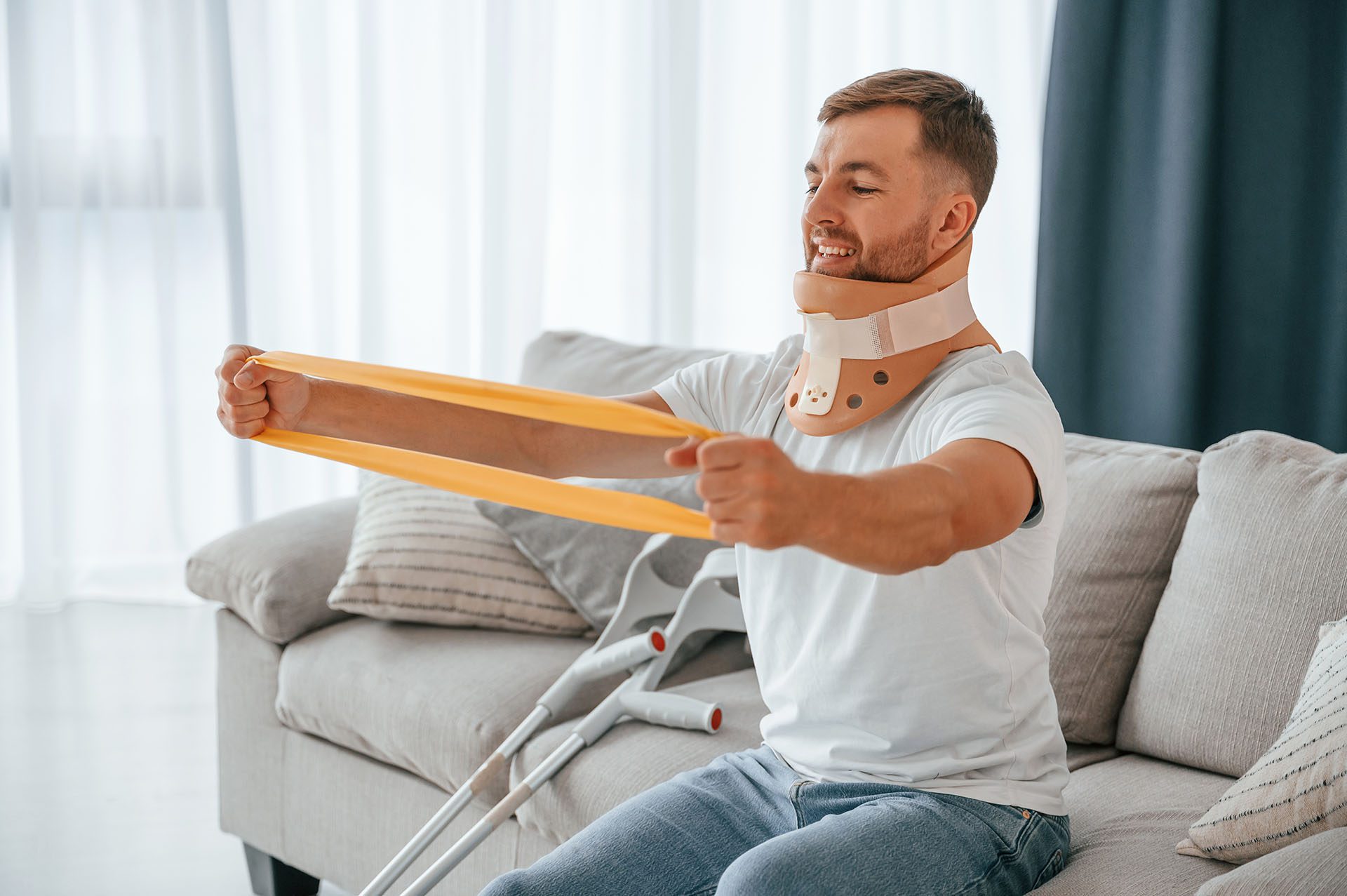From Impact to Recovery: How Massage and Chiropractic Aid MVA Healing

Motor vehicle accidents (MVAs) can cause a range of injuries, from minor aches to severe spinal, musculoskeletal, and nerve damage. These injuries often lead to pain, reduced mobility, and emotional distress, making recovery challenging. Massage therapy and chiropractic care, particularly when combined with integrative medicine, offer effective, non-invasive solutions to help individuals heal physically and emotionally. This article explores the types of injuries caused by MVAs, the benefits of various massage therapy techniques, and the role of chiropractic care, with a focus on Dr. Alexander Jimenez’s expertise in treating accident victims in El Paso, Texas.
Injuries from Motor Vehicle Accidents
MVAs generate immense forces that can harm the body, even in low-speed collisions. Common injuries include:
- Spinal Injuries: The spine is vulnerable to compression, misalignment, or disc herniation during crashes. Whiplash, a common MVA injury, occurs when the neck jerks rapidly, straining muscles, ligaments, and discs (Alexander Orthopaedics, 2018). Severe cases may involve spinal cord injuries, leading to symptoms like numbness or weakness (Jimenez, 2025a).
- Musculoskeletal Injuries: Muscles, ligaments, and tendons often suffer micro-tears, sprains, or strains from seatbelt trauma or impact with vehicle parts. These injuries can cause stiffness, inflammation, and chronic pain if untreated (MVA MVP, n.d.-a).
- Nerve Injuries: Nerve compression or irritation from spinal misalignments (subluxations) can lead to tingling, numbness, or radiating pain, such as sciatica from lumbar disc herniation (Jimenez, 2025b). Neuropraxia, a temporary nerve injury, is also common (El Paso Back Clinic, 2025).
These injuries may not be immediately visible, as adrenaline can mask symptoms. Delaying treatment increases the risk of chronic pain and long-term complications (Chiropractic Scientist, 2025).
References
Alexander Orthopaedics. (2018, June 29). Auto accident recovery. https://alexanderorthopaedics.com Chiropractic Scientist. (2025, June 13). Post-car accident physical therapy approaches to recovery. https://chiropracticscientist.com El Paso Back Clinic. (2025, June 20). Spinal alignment pain relief for motor vehicle injuries. https://elpasobackclinic.com Jimenez, A. (2025a). Car accident recovery guide. https://dralexjimenez.com Jimenez, A. (2025b). Post-automobile accident recovery and healing foods. https://dralexjimenez.com MVA MVP. (n.d.-a). Massage therapy for post-vehicular accidents. https://mvamvp.com/massage-therapy-for-post-vehicular-accidents/
Benefits of Massage Therapy for MVA Recovery
Massage therapy is a powerful tool for addressing both the physical and emotional effects of MVAs. Different techniques target specific issues, promoting healing and reducing stress.
Physical Benefits of Massage Therapy
- Pain Relief: Massage reduces muscle tension and releases endorphins, natural painkillers. Deep tissue massage targets tight muscles and scar tissue, alleviating pain from sprains or strains (Denver Chiropractic, n.d.). A study found massage effective for neck pain, a common MVA issue (Furlan et al., 2015).
- Improved Circulation: Techniques like Swedish massage enhance blood flow, delivering oxygen and nutrients to injured tissues. This reduces inflammation and speeds healing (MVA MVP, n.d.-b).
- Restored Range of Motion: MVAs often cause stiffness. Massage loosens tight muscles and joints, improving flexibility and mobility (MVA MVP, n.d.-c).
- Reduced Scar Tissue: Deep tissue and myofascial release break down adhesions from micro-tears, preventing chronic stiffness (Galiny Accident Recovery Center, n.d.).
- Trigger Point Therapy: This targets “knots” in muscles that cause referred pain. By applying pressure to these points, therapists relieve pain and improve function (EG Healthcare, n.d.).
Emotional Benefits of Massage Therapy
MVAs can cause emotional distress, including anxiety, tension, and post-traumatic stress disorder (PTSD). Massage therapy helps by:
- Reducing Stress: Gentle techniques, such as Swedish massage, calm the nervous system, lower cortisol levels, and promote relaxation (Boulder Sports Clinic, n.d.).
- Improving Mood: Massage triggers the release of serotonin and dopamine, countering emotional distress (Massage Envy, n.d.).
- Supporting PTSD Recovery: Regular sessions reduce physical tension linked to psychological stress, helping patients process trauma (Primary Rehab, n.d.).
Types of Massage Therapy for MVA Recovery
Several massage techniques are tailored for MVA recovery:
- Swedish Massage: Uses long, flowing strokes to relax muscles and improve circulation. Ideal for reducing stress and mild pain (East Bridge Massage, 2021).
- Deep Tissue Massage: Targets deeper muscle layers to address chronic pain and scar tissue. It’s effective for severe musculoskeletal injuries but may be intense (Rocky Mountain Accident Care, n.d.).
- Myofascial Release: Focuses on connective tissue to release tension and improve mobility. It’s useful for whiplash and soft tissue injuries (PhysioFlow, n.d.).
- Trigger Point Therapy: Relieves specific pain points, such as those causing headaches or radiating pain (Revive Injury, n.d.).
- Neuromuscular Therapy: Combines deep pressure and stretching to address nerve compression and muscle imbalances (Mind Body Med, n.d.).
References
Boulder Sports Clinic. (n.d.). The benefits of massage for PTSD and trauma healing. https://www.bouldersportsclinic.com/blog/the-benefits-of-massage-for-ptsd-and-trauma-healing Denver Chiropractic. (n.d.). Can massage therapy help treat car accident injuries? https://denver-chiropractic.com East Bridge Massage. (2021). 5 types of massage you need after a car accident. https://eastbridgemassageportland.com/2021/5-types-of-massage-you-need-after-a-car-accident/\
EG Healthcare. (n.d.). Complete guide to trigger point therapy. https://eghealthcare.net/complete-guide-to-trigger-point-therapy/ Furlan, A. D., Yazdi, F., Tsertsvadze, A., Gross, A., Van Tulder, M., Santaguida, L., Gagnier, J., Ammendolia, C., Dryden, T., Doucette, S., Skidmore, B., Daniel, R., Ostermann, T., & Tsouros, S. (2015). A systematic review and meta-analysis of efficacy, cost-effectiveness, and safety of selected complementary and alternative medicine for neck and low-back pain. Evidence-Based Complementary and Alternative Medicine, 2015, 1–61. https://doi.org/10.1155/2015/149409 Galiny Accident Recovery Center. (n.d.). The healing power of massage therapy after a car accident. https://galiny.com/the-healing-power-of-massage-therapy-after-a-car-accident/\
Massage Envy. (n.d.). Massage techniques may help for whiplash recovery. https://www.massageenvy.com/self-care-blog/body-care/whiplash-massage Mind Body Med. (n.d.). Can massage therapy fix whiplash? https://mindbodymedseattle.com/can-massage-therapy-fix-whiplash/ MVA MVP. (n.d.-b). How massage therapy helps with motor vehicle accident injuries. https://mvamvp.com/how-massage-therapy-helps-with-motor-vehicle-accident-injuries/\
MVA MVP. (n.d.-c). Discover the benefits of massage therapy after a car accident. https://mvamvp.com/discover-the-benefits-of-massage-therapy-after-a-car-accident/\
PhysioFlow. (n.d.). Massage therapy for whiplash recovery. https://www.physioflow.ca/massage-therapy-for-whiplash-recovery/\
Primary Rehab. (n.d.). Healing your mind and body after a traumatic event: Massage therapy. https://primaryrehab.com/healing-your-mind-and-body-after-a-traumatic-event-massage-therapy-delta/ Revive Injury. (n.d.). What is trigger point therapy? https://www.reviveinjury.com/what-trigger-point-therapy/ Rocky Mountain Accident Care. (n.d.). Massage therapy. https://rockymountainaccidentcares.com/services/massage-therapy/
Dr. Alexander Jimenez’s Approach to MVA Recovery
Dr. Alexander Jimenez, a dual-licensed chiropractor and board-certified family nurse practitioner in El Paso, Texas, is a leader in MVA recovery. With over 25 years of experience, his unique skills combine chiropractic care, medical diagnostics, and integrative medicine to address both physical and legal aspects of recovery.
Clinical Correlation and Dual Diagnosis
Dr. Jimenez’s dual licensure enables him to assess injuries from both biomechanical and medical perspectives. He correlates symptoms like neck pain or numbness with specific injuries, such as disc herniations or nerve compression, using:
- Advanced Imaging: X-rays, MRIs, and CT scans identify spinal misalignments, soft tissue damage, and disc issues (Jimenez, 2025c).
- Diagnostic assessments, including electromyography (EMG), functional movement screens, and neurological exams, help detect nerve damage and subtle injuries (El Paso Back Clinic, 2025).
- Dual Diagnosis: As a nurse practitioner, he evaluates systemic issues, such as inflammation or hormonal imbalances, that may exacerbate pain, ensuring comprehensive treatment (Wellness Doctor RX, 2025).
This approach ensures accurate diagnoses and personalized treatment plans, addressing both symptoms and root causes.
Chiropractic and Integrative Medicine
Dr. Jimenez uses chiropractic care to correct spinal misalignments and relieve nerve pressure. Spinal adjustments restore joint mobility, reduce inflammation, and alleviate pain associated with conditions such as whiplash or sciatica (Jimenez, 2025d). A 2020 study supports the effectiveness of spinal manipulative therapy for chronic back pain (Rubinstein et al., 2020).
His integrative medicine approach includes:
- Nutrition and Wellness: Personalized diet plans reduce inflammation and support healing (Jimenez, 2025e).
- Acupuncture: Stimulates endorphin release and improves blood flow, complementing chiropractic care (PushAsRx, 2025).
- Physical Therapy: Targeted exercises restore strength and mobility, preventing long-term issues (Chiropractic Scientist, 2025).
Handling Legal Paperwork
Dr. Jimenez’s expertise as a nurse practitioner enables him to provide detailed medical documentation for personal injury cases. His reports correlate injuries with diagnostic findings, supporting insurance claims and legal proceedings. This is particularly critical in Texas, where timely documentation can significantly impact Personal Injury Protection (PIP) benefits (Gould Cooksey Fennell, 2025).
Improving Overall Health
By addressing root causes—such as misalignments, inflammation, or emotional stress—Dr. Jimenez’s approach promotes long-term wellness. His clinic, Injury Medical & Chiropractic Clinic, integrates chiropractic adjustments, massage therapy, and lifestyle coaching to help patients regain function and prevent chronic pain (Jimenez, 2025f).
References
Chiropractic Scientist. (2025, June 13). Post-car accident physical therapy approaches to recovery. https://chiropracticscientist.com El Paso Back Clinic. (2025, June 20). Spinal alignment pain relief for motor vehicle injuries. https://elpasobackclinic.com Gould Cooksey Fennell. (2025, February 14). Chiropractor after a car accident. https://gouldcooksey.com Jimenez, A. (2025c). Injury medical & chiropractic clinic. https://elpasobackclinic.com/ Jimenez, A. (2025d). Chiropractic healing after accidents. https://dralexjimenez.com Jimenez, A. (2025e). Post-automobile accident recovery and healing foods. https://dralexjimenez.com Jimenez, A. (2025f). Car accident recovery guide. https://dralexjimenez.com PushAsRx. (2025, June 26). Car crash wellness protocol. https://pushasrx.com Rubinstein, S. M., de Zoete, A., van Middelkoop, M., Assendelft, W. J. J., de Boer, M. R., & van Tulder, M. W. (2020). Spinal manipulative therapy for chronic low-back pain. Spine Journal, 20(4), 567–578. https://doi.org/10.1016/j.spinee.2019.11.015 Wellness Doctor RX. (2025, June 20). Personal injury chiropractic El Paso for accident recovery. https://wellnessdoctorrx.com
Combining Massage Therapy and Chiropractic Care
Integrating massage therapy with chiropractic care enhances MVA recovery. Massage prepares muscles for adjustments by reducing tension, while chiropractic corrections align the spine, improving nerve function. Together, they address physical injuries and emotional stress, promoting faster healing (CureZone Physiotherapy, n.d.). Dr. Jimenez often combines these therapies with acupuncture and nutrition for a holistic approach (PushAsRx, 2025).
References
CureZone Physiotherapy. (n.d.). Role of massage therapy in motor vehicle accident rehabilitation. https://curezonephysiotherapy.com/role-of-massage-therapy-in-motor-vehicle-accident-rehabilitation\
PushAsRx. (2025, June 26). Car crash wellness protocol. https://pushasrx.com
Conclusion
MVAs can cause significant spinal, musculoskeletal, and nerve injuries, leading to pain and emotional distress. Massage therapy, utilizing techniques such as Swedish, deep tissue, and trigger point therapy, helps reduce pain, improve mobility, and support emotional well-being. Chiropractic care, as practiced by Dr. Alexander Jimenez, addresses root causes through spinal adjustments, advanced diagnostics, and integrative medicine. His dual expertise ensures comprehensive care and proper legal documentation, helping patients recover fully and maintain long-term health.
References
Alexander Orthopaedics. (2018, June 29). Auto accident recovery. https://alexanderorthopaedics.com
Boulder Sports Clinic. (n.d.). The benefits of massage for PTSD and trauma healing. https://www.bouldersportsclinic.com/blog/the-benefits-of-massage-for-ptsd-and-trauma-healing
Chiropractic Scientist. (2025, June 13). Post-car accident physical therapy approaches to recovery. https://chiropracticscientist.com
CureZone Physiotherapy. (n.d.). Role of massage therapy in motor vehicle accident rehabilitation. https://curezonephysiotherapy.com/role-of-massage-therapy-in-motor-vehicle-accident-rehabilitation
Denver Chiropractic. (n.d.). Can massage therapy help treat car accident injuries? https://denver-chiropractic.com
East Bridge Massage. (2021). 5 types of massage you need after a car accident. https://eastbridgemassageportland.com/2021/5-types-of-massage-you-need-after-a-car-accident/
EG Healthcare. (n.d.). Complete guide to trigger point therapy. https://eghealthcare.net/complete-guide-to-trigger-point-therapy/
El Paso Back Clinic. (2025, June 20). Spinal alignment pain relief for motor vehicle injuries. https://elpasobackclinic.com
Furlan, A. D., Yazdi, F., Tsertsvadze, A., Gross, A., Van Tulder, M., Santaguida, L., Gagnier, J., Ammendolia, C., Dryden, T., Doucette, S., Skidmore, B., Daniel, R., Ostermann, T., & Tsouros, S. (2015). A systematic review and meta-analysis of efficacy, cost-effectiveness, and safety of selected complementary and alternative medicine for neck and low-back pain. Evidence-Based Complementary and Alternative Medicine, 2015, Article 149409. https://doi.org/10.1155/2015/149409
Galiny Accident Recovery Center. (n.d.). The healing power of massage therapy after a car accident. https://galiny.com/the-healing-power-of-massage-therapy-after-a-car-accident/
Gould Cooksey Fennell. (2025, February 14). Chiropractor after a car accident. https://gouldcooksey.com
Jimenez, A. (2025a). Car accident recovery guide. https://dralexjimenez.com
Jimenez, A. (2025b). Post-automobile accident recovery and healing foods. https://dralexjimenez.com
Jimenez, A. (2025c). Injury medical & chiropractic clinic. https://elpasobackclinic.com/
Jimenez, A. (2025d). Chiropractic healing after accidents. https://dralexjimenez.com
Jimenez, A. (2025e). Post-automobile accident recovery and healing foods. https://dralexjimenez.com
Jimenez, A. (2025f). Car accident recovery guide. https://dralexjimenez.com
Massage Envy. (n.d.). Massage techniques may help for whiplash recovery. https://www.massageenvy.com/self-care-blog/body-care/whiplash-massage
Mind Body Med. (n.d.). Can massage therapy fix whiplash? https://mindbodymedseattle.com/can-massage-therapy-fix-whiplash/
MVA MVP. (n.d.-a). Massage therapy for post-vehicular accidents. https://mvamvp.com/massage-therapy-for-post-vehicular-accidents/
MVA MVP. (n.d.-b). How massage therapy helps with motor vehicle accident injuries. https://mvamvp.com/how-massage-therapy-helps-with-motor-vehicle-accident-injuries/
MVA MVP. (n.d.-c). Discover the benefits of massage therapy after a car accident. https://mvamvp.com/discover-the-benefits-of-massage-therapy-after-a-car-accident/
PhysioFlow. (n.d.). Massage therapy for whiplash recovery. https://www.physioflow.ca/massage-therapy-for-whiplash-recovery/
Primary Rehab. (n.d.). Healing your mind and body after a traumatic event: Massage therapy. https://primaryrehab.com/healing-your-mind-and-body-after-a-traumatic-event-massage-therapy-delta/
PushAsRx. (2025, June 26). Car crash wellness protocol. https://pushasrx.com
Revive Injury. (n.d.). What is trigger point therapy? https://www.reviveinjury.com/what-trigger-point-therapy/
Rocky Mountain Accident Care. (n.d.). Massage therapy. https://rockymountainaccidentcares.com/services/massage-therapy/
Rubinstein, S. M., de Zoete, A., van Middelkoop, M., Assendelft, W. J. J., de Boer, M. R., & van Tulder, M. W. (2020). Spinal manipulative therapy for chronic low-back pain. Spine Journal, 20(4), 567–578. https://doi.org/10.1016/j.spinee.2019.11.015
Wellness Doctor RX. (2025, June 20). Personal injury chiropractic El Paso for accident recovery. https://wellnessdoctorrx.com








